Introducing HAR Sanitizer: secure HAR sharing

On Wednesday, October 18th, 2023, Cloudflare’s Security Incident Response Team (SIRT) discovered an attack on our systems that originated from an authentication token stolen from one of Okta’s support systems. No Cloudflare customer information or systems were impacted by the incident, thanks to the real-time detection and rapid action of our Security Incident Response Team (SIRT) in tandem with our Zero Trust security posture and use of hardware keys. With that said, we’d rather not repeat the experience — and so we have built a new security tool that can help organizations render this type of attack obsolete for good.
The bad actor in the Okta breach compromised user sessions by capturing session tokens from administrators at Cloudflare and other impacted organizations. They did this by infiltrating Okta’s customer support system and stealing one of the most common mechanisms for troubleshooting — an HTTP Response Archive (HAR) file.
HAR files contain a record of a user’s browser session, a kind of step-by-step audit, that a user can share with someone like a help desk agent to diagnose an issue. However, the file can also contain sensitive information that can be used to launch an attack.
As a follow-up to the Continue reading
Email Routing subdomain support, new APIs and security protocols

It's been two years since we announced Email Routing, our solution to create custom email addresses for your domains and route incoming emails to your preferred mailbox. Since then, the team has worked hard to evolve the product and add more powerful features to meet our users' expectations. Examples include Route to Workers, which allows you to process your Emails programmatically using Workers scripts, Public APIs, Audit Logs, or DMARC Management.
We also made significant progress in supporting more email security extensions and protocols, protecting our customers from unwanted traffic, and keeping our IP space reputation for email egress impeccable to maximize our deliverability rates to whatever inbox upstream provider you chose.
Since leaving beta, Email Routing has grown into one of our most popular products; it’s used by more than one million different customer zones globally, and we forward around 20 million messages daily to every major email platform out there. Our product is mature, robust enough for general usage, and suitable for any production environment. And it keeps evolving: today, we announce three new features that will help make Email Routing more secure, flexible, and powerful than ever.
New security protocols
The SMTP email protocol Continue reading
DDoS threat report for 2023 Q3

Welcome to the third DDoS threat report of 2023. DDoS attacks, or distributed denial-of-service attacks, are a type of cyber attack that aims to disrupt websites (and other types of Internet properties) to make them unavailable for legitimate users by overwhelming them with more traffic than they can handle — similar to a driver stuck in a traffic jam on the way to the grocery store.
We see a lot of DDoS attacks of all types and sizes, and our network is one of the largest in the world spanning more than 300 cities in over 100 countries. Through this network we serve over 64 million HTTP requests per second at peak and about 2.3 billion DNS queries every day. On average, we mitigate 140 billion cyber threats each day. This colossal amount of data gives us a unique vantage point to understand the threat landscape and provide the community access to insightful and actionable DDoS trends.
In recent weeks, we've also observed a surge in DDoS attacks and other cyber attacks against Israeli newspaper and media websites, as well as financial institutions and government websites. Palestinian websites have also seen a significant increase in DDoS attacks. View Continue reading
Q3 2023 Internet disruption summary
This post is also available in 简体中文, 繁體中文, 한국어, Deutsch, Français and Español.

Cloudflare operates in more than 300 cities in over 100 countries, where we interconnect with over 12,500 network providers in order to provide a broad range of services to millions of customers. The breadth of both our network and our customer base provides us with a unique perspective on Internet resilience, enabling us to observe the impact of Internet disruptions.
We have been publishing these summaries since the first quarter of 2022, and over that time, the charts on Cloudflare Radar have evolved. Many of the traffic graphs in early editions of this summary were screenshots from the relevant traffic pages on Radar. Late last year, we launched the ability to download graphs, and earlier this year, to embed dynamic graphs, and these summaries have taken advantage of those capabilities where possible. Sharp-eyed readers may notice an additional evolution in some of the graphs below: yellow highlighting indicating an observed “traffic anomaly”. Identification of such anomalies, along with the ability to be notified about them, as well as a timeline enhancement (embedded below) to the Cloudflare Radar Outage Center, were launched as Continue reading
Cache Reserve goes GA: enhanced control to minimize egress costs
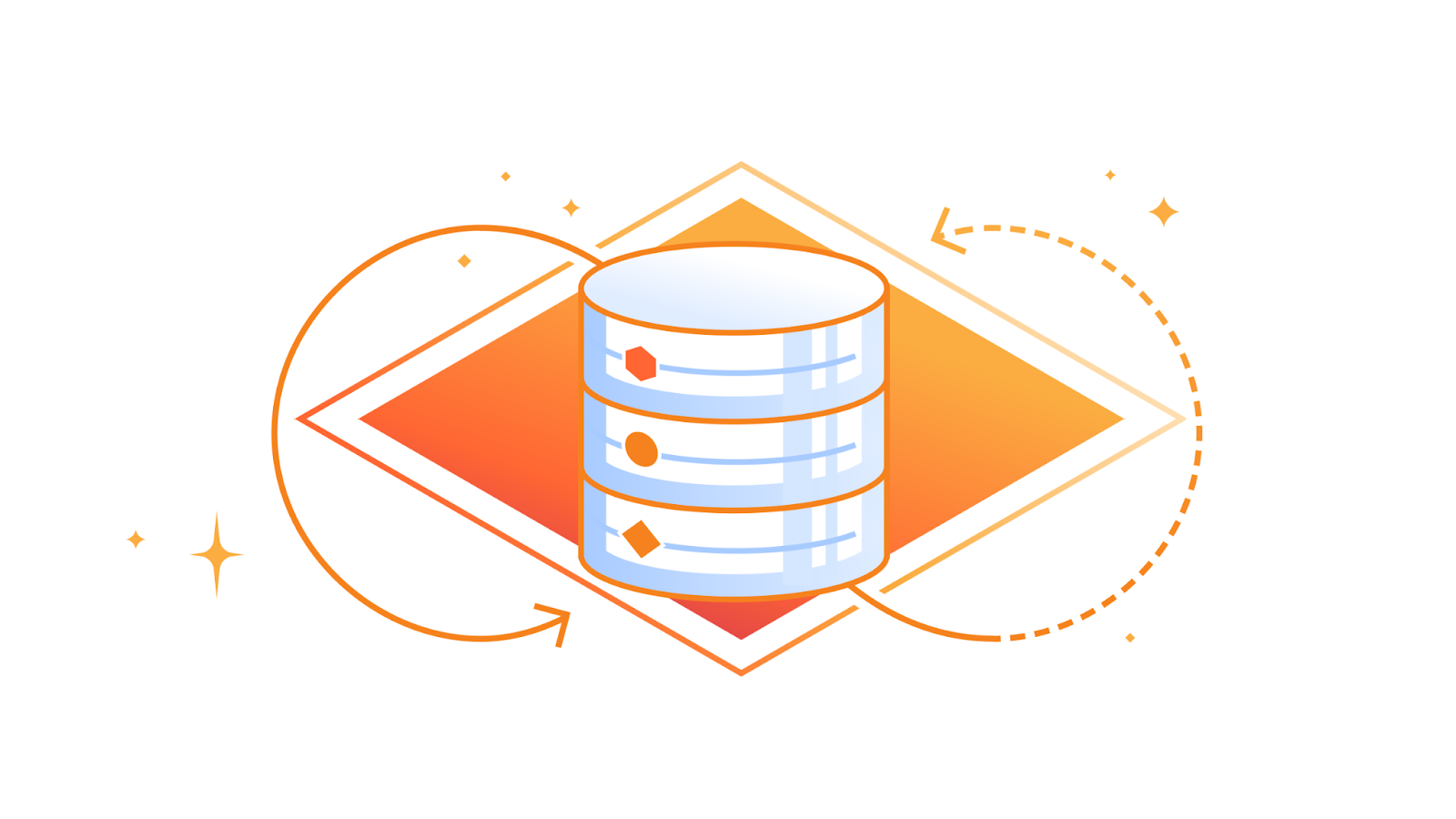
Everyone is chasing the highest cache ratio possible. Serving more content from Cloudflare’s cache means it loads faster for visitors, saves website operators money on egress fees from origins, and provides multiple layers of resiliency and protection to make sure that content is available to be served and websites scale effortlessly. A year ago we introduced Cache Reserve to help customer’s serve as much content as possible from Cloudflare’s cache.
Today, we are thrilled to announce the graduation of Cache Reserve from beta to General Availability (GA), accompanied by the introduction of several exciting new features. These new features include adding Cache Reserve into the analytics shown on the Cache overview section of the Cloudflare dashboard, giving customers the ability to see how they are using Cache Reserve over time. We have also added the ability for customers to delete all data in Cache Reserve without losing content in the edge cache. This is useful for customers who are no longer using Cache Reserve storage.
We’re also introducing new tools that give organizations more granular control over which files are saved to Cache Reserve, based on valuable feedback we received during the beta. The default configuration of Cache Reserve Continue reading
Cache Rules go GA: precision control over every part of your cache

One year ago we introduced Cache Rules, a new way to customize cache settings on Cloudflare. Cache Rules provide greater flexibility for how users cache content, offering precise controls, a user-friendly API, and seamless Terraform integrations. Since it was released in late September 2022, over 100,000 websites have used Cache Rules to fine-tune their cache settings.
Today, we're thrilled to announce that Cache Rules, along with several other Rules products, are generally available (GA). But that’s not all — we're also introducing new configuration options for Cache Rules that provide even more options to customize how you cache on Cloudflare. These include functionality to define what resources are eligible for Cache Reserve, what timeout values should be respected when receiving data from your origin server, which custom ports we should use when we cache content, and whether we should bypass Cloudflare’s cache in the absence of a cache-control header.
Cache Rules give users full control and the ability to tailor their content delivery strategy for almost any use case, without needing to write code. As Cache Rules go GA, we are incredibly excited to see how fast customers can achieve their perfect cache strategy.
History of Customizing Cache Continue reading
Cyber attacks in the Israel-Hamas war

On October 7, 2023, at 03:30 GMT (06:30 AM local time), Hamas attacked Israeli cities and fired thousands of rockets toward populous locations in southern and central Israel, including Tel Aviv and Jerusalem. Air raid sirens began sounding, instructing civilians to take cover.
Approximately twelve minutes later, Cloudflare systems automatically detected and mitigated DDoS attacks that targeted websites that provide critical information and alerts to civilians on rocket attacks. The initial attack peaked at 100k requests per second (rps) and lasted ten minutes. Forty-five minutes later, a second much larger attack struck and peaked at 1M rps. It lasted six minutes. Additional smaller DDoS attacks continued hitting the websites in the next hours.

Not just DDoS attacks
Multiple Israeli websites and mobile apps have become targets of various pro-Palestinian hacktivist groups. According to Cybernews, one of those groups, AnonGhost, exploited a vulnerability in a mobile app that alerts Israeli civilians of incoming rockets, “Red Alert: Israel”. The exploit allowed them to intercept requests, expose servers and APIs, and send fake alerts to some app users, including a message that a “nuclear bomb is coming Continue reading
How Cloudflare mitigated yet another Okta compromise
On Wednesday, October 18, 2023, we discovered attacks on our system that we were able to trace back to Okta – threat actors were able to leverage an authentication token compromised at Okta to pivot into Cloudflare’s Okta instance. While this was a troubling security incident, our Security Incident Response Team’s (SIRT) real-time detection and prompt response enabled containment and minimized the impact to Cloudflare systems and data. We have verified that no Cloudflare customer information or systems were impacted by this event because of our rapid response. Okta has now released a public statement about this incident.
This is the second time Cloudflare has been impacted by a breach of Okta’s systems. In March 2022, we blogged about our investigation on how a breach of Okta affected Cloudflare. In that incident, we concluded that there was no access from the threat actor to any of our systems or data – Cloudflare’s use of hard keys for multi-factor authentication stopped this attack.
The key to mitigating this week’s incident was our team’s early detection and immediate response. In fact, we contacted Okta about the breach of their systems before they had notified us. The attacker used an open Continue reading
Empowering our partners with the new Tenant Platform dashboard
Itching to get started? Apply to the Self Serve Partner Beta or Enterprise partner programs now.
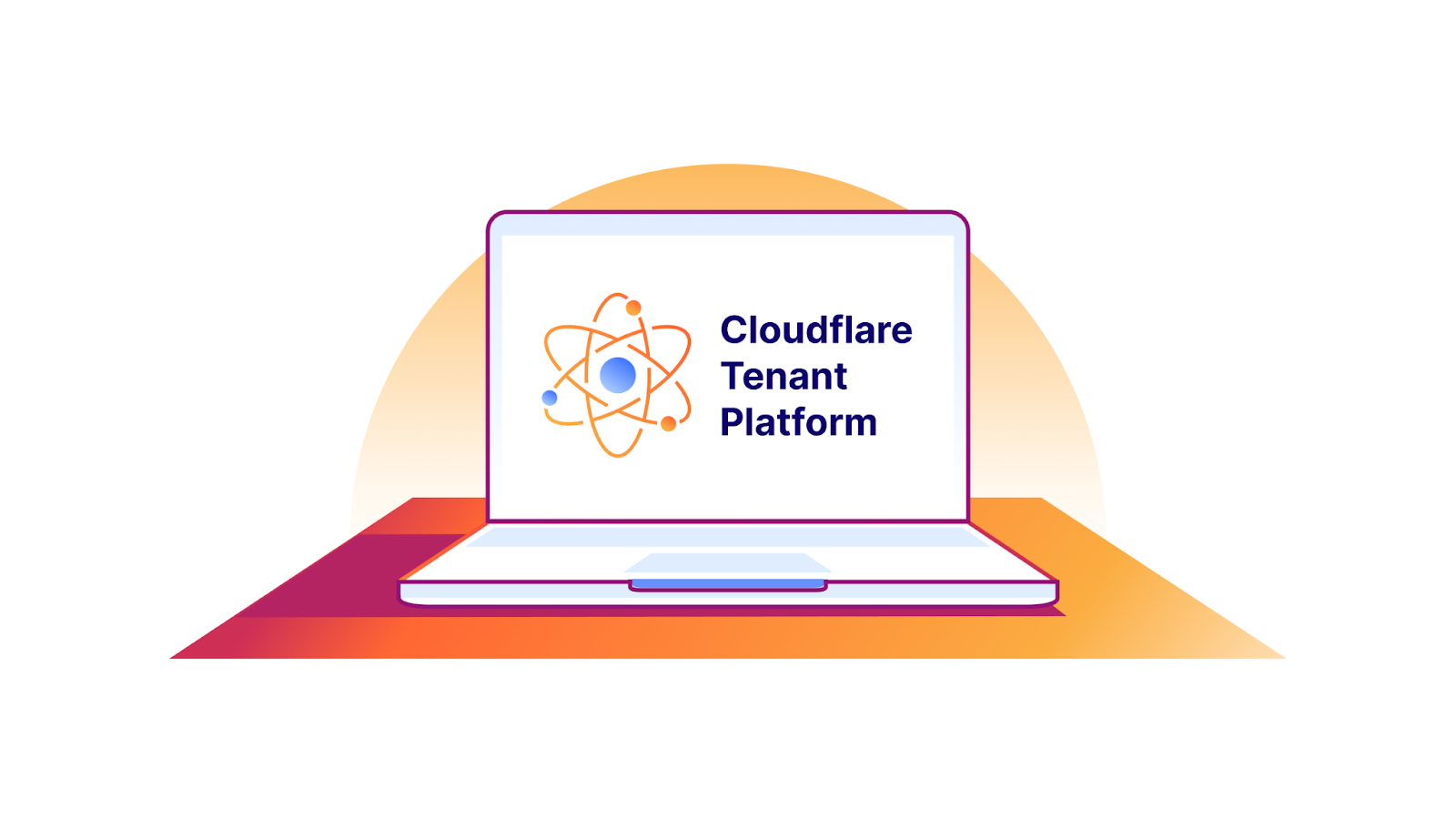
Cloudflare has always worked closely with partners to help build a better Internet. From our earliest Hosting Partners, to our latest Cloudflare One program and Authorized Service Delivery partners, we are dedicated to supporting our peers across the networking and cybersecurity ecosystem to secure Enterprise networks, mission-critical applications, and remote employees. As part of that commitment, we are proud to announce the general availability of our first dashboard for our Tenant Platform, providing an intuitive user interface for agencies and partners to manage their client accounts.
Tenant Platform introduction
The first version of the Tenant Platform was created in 2018 to support one of our large integration partners, IBM Cloud. They needed a secure way to independently provision accounts for their clients, spin up custom subscriptions, invite service users within each new account, and begin to configure the service. This platform, although API only, worked extremely well with our OEM and integration partners that were including our solution within their current platform to support their customers.

User interface overview
As Cloudflare has expanded the type of partners and customers it works Continue reading
Network flow monitoring is GA, providing end-to-end traffic visibility

Network engineers often find they need better visibility into their network’s traffic and operations while analyzing DDoS attacks or troubleshooting other traffic anomalies. These engineers typically have some high level metrics about their network traffic, but they struggle to collect essential information on the specific traffic flows that would clarify the issue. To solve this problem, Cloudflare has been piloting a cloud network flow monitoring product called Magic Network Monitoring that gives customers end-to-end visibility into all traffic across their network.
Today, Cloudflare is excited to announce that Magic Network Monitoring (previously called Flow Based Monitoring) is now generally available to all enterprise customers. Over the last year, the Cloudflare engineering team has significantly improved Magic Network Monitoring; we’re excited to offer a network services product that will help our customers identify threats faster, reduce vulnerabilities, and make their network more secure.
Magic Network Monitoring is automatically enabled for all Magic Transit and Magic WAN enterprise customers. The product is located at the account level of the Cloudflare dashboard and can be opened by navigating to “Analytics & Logs > Magic Monitoring”. The onboarding process for Magic Network Monitoring is self-serve, and all enterprise customers with access can begin Continue reading
Introducing the Project Argus Datacenter-ready Secure Control Module design specification


Historically, data center servers have used motherboards that included all key components on a single circuit board. The DC-SCM (Datacenter-ready Secure Control Module) decouples server management and security functions from a traditional server motherboard, enabling development of server management and security solutions independent of server architecture. It also provides opportunities for reducing server printed circuit board (PCB) material cost, and allows unified firmware images to be developed.
Today, Cloudflare is announcing that it has partnered with Lenovo to design a DC-SCM for our next-generation servers. The design specification has been published to the OCP (Open Compute Project) contribution database under the name Project Argus.
A brief introduction to baseboard management controllers
A baseboard management controller (BMC) is a specialized processor that can be found in virtually every server product. It allows remote access to the server through a network connection, and provides a rich set of server management features. Some of the commonly used BMC features include server power management, device discovery, sensor monitoring, remote firmware update, system event logging, and error reporting.
In a typical server design, the BMC resides on the server motherboard, along with other key components such as the processor, memory, CPLD and so on. This Continue reading
Malicious “RedAlert – Rocket Alerts” Application Targets Israeli Phone Calls, SMS, and User Information

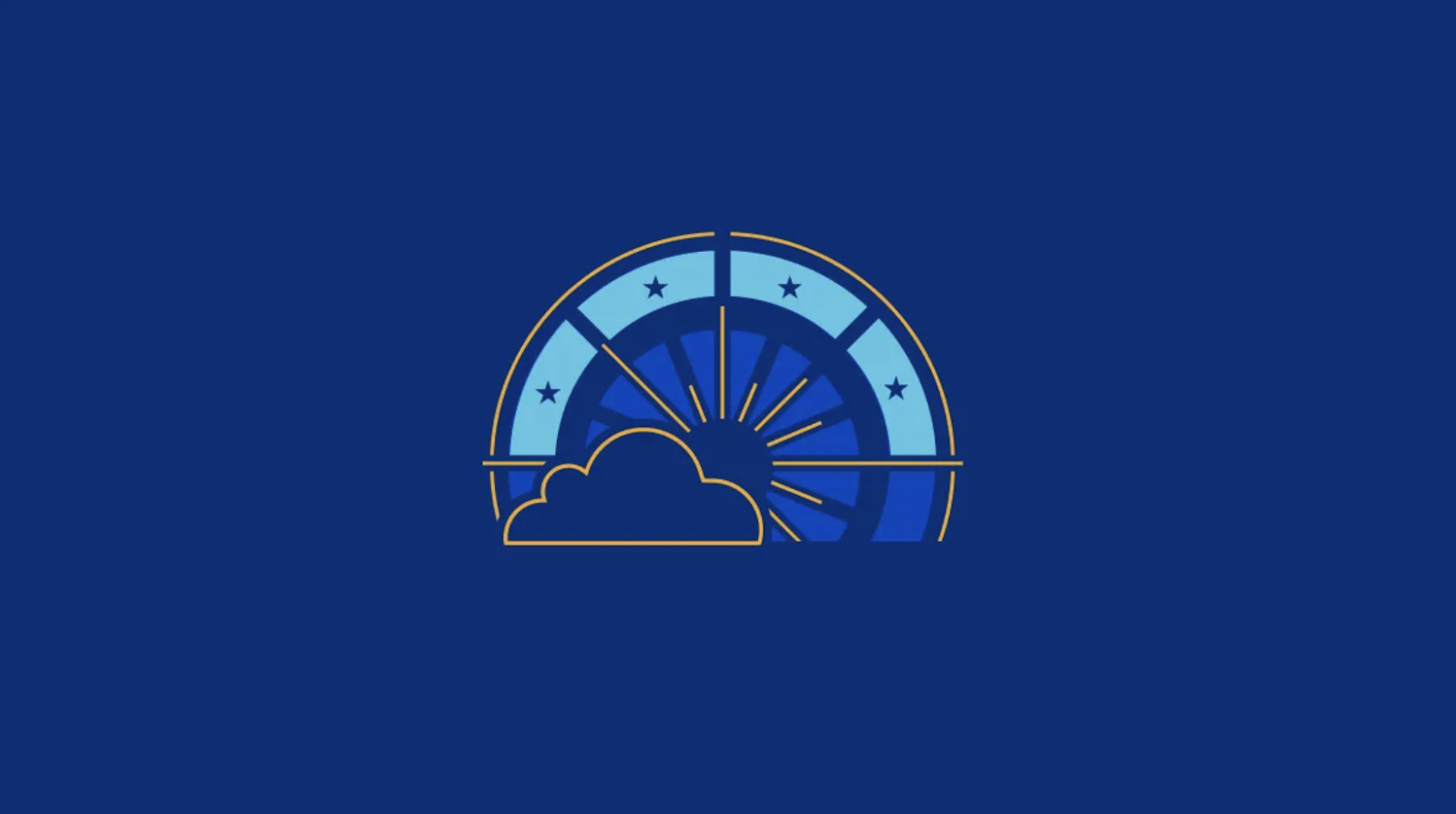
On October 13, 2023, Cloudflare’s Cloudforce One Threat Operations Team became aware of a website hosting a Google Android Application (APK) impersonating the legitimate RedAlert - Rocket Alerts application (https://play.google.com/store/apps/details?id=com.red.alert&hl=en&pli=1). More than 5,000 rockets have been launched into Israel since the attacks from Hamas began on October 7th 2023. RedAlert - Rocket Alerts developed by Elad Nava allows individuals to receive timely and precise alerts about incoming airstrikes. Many people living in Israel rely on these alerts to seek safety - a service which has become increasingly important given the newest escalations in the region.
Applications alerting of incoming airstrikes have become targets as only days ago, Pro-Palestinian hacktivist group AnonGhost exploited a vulnerability in another application, “Red Alert: Israel” by Kobi Snir. (https://cybernews.com/cyber-war/israel-redalert-breached-anonghost-hamas/) Their exploit allowed them to intercept requests, expose servers and APIs, and send fake alerts to some app users, including a message that a “nuclear bomb is coming”. AnonGhost also claimed they attacked other rocket alert applications, including RedAlert by Elad Nava. As of October 11, 2023, the RedAlert app was reportedly functioning normally.
In the last two days, a new malicious website (hxxps://redalerts[.]me) has Continue reading
How Prisma saved 98% on distribution costs with Cloudflare R2


The following is a guest post written by Pierre-Antoine Mills, Miguel Fernández, and Petra Donka of Prisma. Prisma provides a server-side library that helps developers read and write data to the database in an intuitive, efficient and safe way.
Prisma’s mission is to redefine how developers build data-driven applications. At its core, Prisma provides an open-source, next-generation TypeScript Object-Relational Mapping (ORM) library that unlocks a new level of developer experience thanks to its intuitive data model, migrations, type-safety, and auto-completion.
Prisma ORM has experienced remarkable growth, engaging a vibrant community of developers. And while it was a great problem to have, this growth was causing an explosion in our AWS infrastructure costs. After investigating a wide range of alternatives, we went with Cloudflare’s R2 storage — and as a result are thrilled that our engine distribution costs have decreased by 98%, while delivering top-notch performance.
It was a natural fit: Prisma is already a proud technology partner of Cloudflare’s, offering deep database integration with Cloudflare Workers. And Cloudflare products provide much of the underlying infrastructure for Prisma Accelerate and Prisma Pulse, empowering user-focused product development. In this post, we’ll dig into how we decided to extend our ongoing Continue reading
HTTP/2 Rapid Reset: deconstructing the record-breaking attack
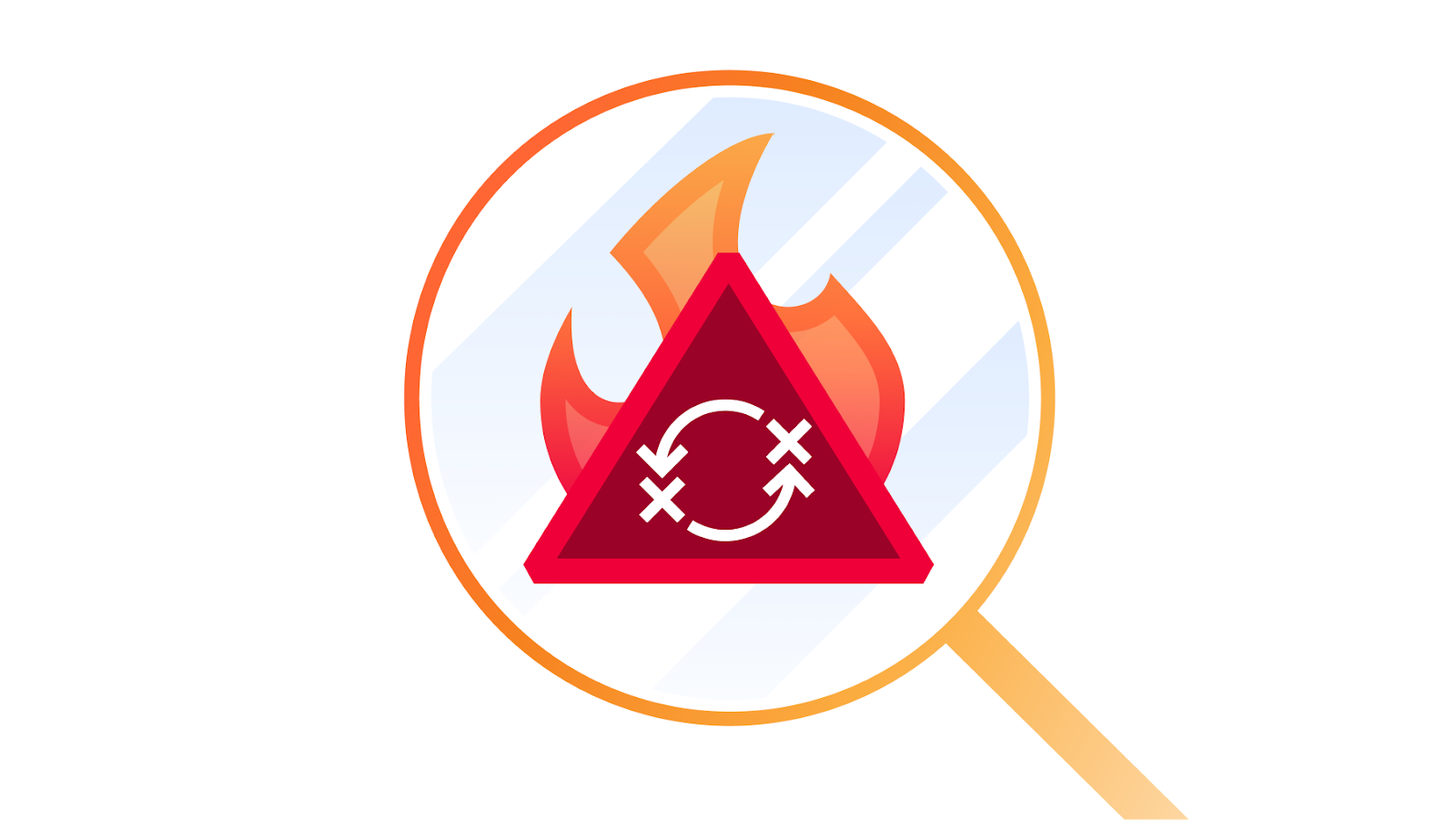
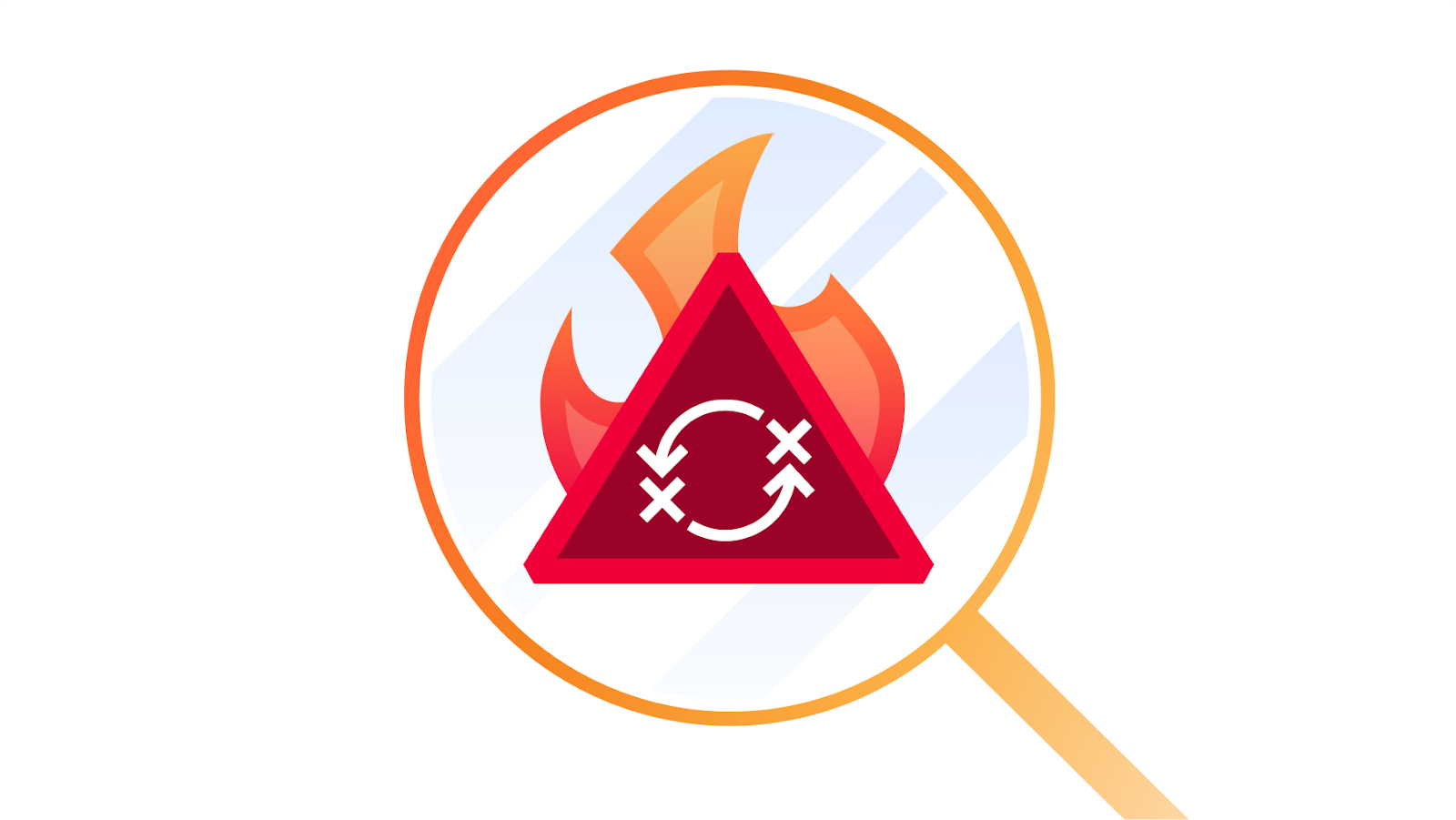
Starting on Aug 25, 2023, we started to notice some unusually big HTTP attacks hitting many of our customers. These attacks were detected and mitigated by our automated DDoS system. It was not long however, before they started to reach record breaking sizes — and eventually peaked just above 201 million requests per second. This was nearly 3x bigger than our previous biggest attack on record.
Concerning is the fact that the attacker was able to generate such an attack with a botnet of merely 20,000 machines. There are botnets today that are made up of hundreds of thousands or millions of machines. Given that the entire web typically sees only between 1–3 billion requests per second, it's not inconceivable that using this method could focus an entire web’s worth of requests on a small number of targets.
Detecting and Mitigating
This was a novel attack vector at an unprecedented scale, but Cloudflare's existing protections were largely able to absorb the brunt of the attacks. While initially we saw some impact to customer traffic — affecting roughly 1% of requests during the initial wave of attacks — today we’ve Continue reading
HTTP/2 Zero-Day Vulnerability Results in Record-Breaking DDoS Attacks


Earlier today, Cloudflare, along with Google and Amazon AWS, disclosed the existence of a novel zero-day vulnerability dubbed the “HTTP/2 Rapid Reset” attack. This attack exploits a weakness in the HTTP/2 protocol to generate enormous, hyper-volumetric Distributed Denial of Service (DDoS) attacks. Cloudflare has mitigated a barrage of these attacks in recent months, including an attack three times larger than any previous attack we’ve observed, which exceeded 201 million requests per second (rps). Since the end of August 2023, Cloudflare has mitigated more than 1,100 other attacks with over 10 million rps — and 184 attacks that were greater than our previous DDoS record of 71 million rps.
This zero-day provided threat actors with a critical new tool in their Swiss Army knife of vulnerabilities to exploit and attack their victims at a magnitude that has never been seen before. While at times complex and challenging to combat, these attacks allowed Cloudflare the opportunity to develop purpose-built technology to mitigate the effects of the zero-day vulnerability.
If you are using Cloudflare for HTTP DDoS mitigation, you are protected. And below, we’ve included more information on this vulnerability, and Continue reading
HTTP/2 Zero-Day-Sicherheitslücke führt zu rekordverdächtigen DDoS-Angriffen

Heute hat Cloudflare zusammen mit Google und Amazon AWS die Existenz einer neuartigen Zero-Day-Schwachstelle bekannt gegeben, die als „HTTP/2 Rapid Reset“-Angriff bezeichnet wird. Dieser Angriff nutzt eine Schwachstelle im HTTP/2-Protokoll aus, um enorme, hypervolumetrische Distributed Denial of Service (DDoS)-Angriffe zu generieren. Cloudflare hat in den letzten Monaten eine Flut dieser Angriffe abgewehrt, einschließlich eines Angriffs, der dreimal so groß war wie der größte Angriff, den wir bisher jemals verzeichnet hatten, und der 201 Millionen Anfragen pro Sekunde (rps) überstieg. Seit Ende August 2023 hat Cloudflare mehr als 1.100 weitere Angriffe mit über 10 Millionen rps abgewehrt – und 184 Angriffe, die unseren bisherigen DDoS-Rekord von 71 Millionen rps übertrafen.
Diese Zero-Day-Schwachstelle gab den Bedrohungsakteuren ein wichtiges neues Werkzeug in ihrem Werkzeugkasten an Schwachstellen an die Hand, mit dem sie ihre Opfer in einem noch nie dagewesenen Ausmaß ausnutzen und angreifen können. Diese Angriffe waren mitunter komplex und schwierig zu bekämpfen. Cloudflare bot sich dadurch jedoch die Gelegenheit, eine speziell konzipierte Technologie zu entwickeln, um die Auswirkungen der Zero-Day-Schwachstelle abzuwehren.
Wenn Sie Cloudflare für die HTTP-DDoS-Abwehr nutzen, sind Sie geschützt. Im Folgenden finden Sie weitere Continue reading
Resultados de la vulnerabilidad HTTP/2 Zero-Day en ataques DDoS sin precedentes

Hoy temprano, Cloudflare, Google y Amazon AWS, divulgaron la existencia de una nueva vulnerabilidad zero-day que se conoce como ataque “HTTP/2 Rapid Reset”. Este ataque aprovecha un punto débil en el protocolo HTTP/2 para generar enormes ataques hipervolumétricos por denegación de servicio distribuido (DDoS). Cloudflare ha mitigado un aluvión de estos ataques en los últimos meses, incluso uno tres veces más grande que cualquier ataque anterior que hayamos observado, que superó las 201 millones de solicitudes por segundo (rps). Desde fines de agosto de 2023, Cloudflare ha mitigado otros más de 1100 ataques con más de 10 millones de rps — y 184 ataques fueron de una magnitud mayor a nuestro récord de ataques DDoS previos de 71 millones de rps.
Este zero-day brindó a los ciberdelincuentes una nueva herramienta fundamental en su navaja suiza de vulnerabilidades para aprovecharse de sus víctimas y atacarlas a una magnitud que nunca habíamos visto. Si bien a veces estos ataques son complejos y difíciles de combatir, brindaron a Cloudflare la oportunidad de desarrollar tecnología con el propósito de mitigar los efectos de la vulnerabilidad zero-day.
HTTP/2 Rapid Reset: 기록적인 공격의 분석

Cloudfare에서는 2023년 8월 25일부터 다수의 고객을 향한 일반적이지 않은 일부 대규모 HTTP 공격을 발견했습니다. 이 공격은 우리의 자동 DDos 시스템에서 탐지하여 완화되었습니다. 하지만 얼마 지나지 않아 기록적인 규모의 공격이 시작되어, 나중에 최고조에 이르러서는 초당 2억 1백만 요청이 넘었습니다. 이는 우리 기록상 가장 대규모 공격이었던 이전의 공격의 거의 3배에 달하는 크기입니다.
우려되는 부분은 공격자가 머신 20,000개로 이루어진 봇넷만으로 그러한 공격을 퍼부을 수 있었다는 사실입니다. 오늘날의 봇넷은 수십만 혹은 수백만 개의 머신으로 이루어져 있습니다. 웹 전체에서 일반적으로 초당 10억~30억 개의 요청이 목격된다는 점을 생각하면, 이 방법을 사용했을 때 웹 전체 요청에 달하는 규모를 소수의 대상에 집중시킬 수 있다는 가능성도 완전히 배제할 수는 없습니다.
감지 및 완화
이는 전례 없는 규모의 새로운 공격 벡터였으나, Cloudflare는 기존 보호 기능을 통해 치명적인 공격을 대부분 흡수할 수 있었습니다. 처음에 목격된 충격은 초기 공격 웨이브 동안 고객 트래픽 요청의 약 1%에 영향을 주었으나, 현재는 완화 방법을 개선하여 시스템에 영향을 주지 않고 Cloudflare 고객을 향한 공격을 차단할 수 있습니다.
우리는 업계의 다른 주요 대기업인 Google과 AWS에서도 같은 시기에 이러한 공격이 있었음을 알게 되었습니다. 이에 따라 지금은 우리의 모든 고객을 이 새로운 DDoS 공격 방법으로부터 어떤 영향도 받지 않도록 보호하기 위하여 Cloudflare의 시스템을 강화했습니다. 또한 Google 및 AWS와 Continue reading
HTTP/2 Rapid Reset:解構破紀錄的攻擊

自 2023 年 8 月 25 日起,我們開始注意到很多客戶遭受到一些異常大型的 HTTP 攻擊。我們的自動化 DDoS 系統偵測到這些攻擊並加以緩解。但是,沒過多久,它們就開始達到破紀錄的規模,峰值最終剛好超過每秒 2.01 億次請求。這幾乎是之前記錄在案的最大規模攻擊的 3 倍。
而更加深入後發現,攻擊者能夠利用僅由 20,000 台機器組成的 Botnet 發起此類攻擊,而如今的 Botnet 規模可達數十萬或數百萬台機器。整個 web 網路通常每秒處理 10-30 億個請求,因此使用此方法可以將整個 web 網路的請求數量等級集中在少數目標上,而其實是可以達成的。
偵測和緩解
這是一種規模空前的新型攻擊手段,但 Cloudflare 的現有保護主要能夠吸收攻擊的壓力。我們一開始就注意到一些客戶流量影響 (在第一波攻擊期間約影響 1% 的請求); 如今,我們仍在持續改善緩解方法,以阻止對任何 Cloudflare 客戶發動的攻擊,而且不會影響我們的系統。
我們注意到這些攻擊,同時也有其他兩家主流的業內廠商(Google 和 AWS)發現相同的狀況。我們竭力強化 Cloudflare 的系統,以確保現今所有客戶都能免於此新型 DDoS 攻擊方法的侵害,而且沒有任何客戶受到影響。我們還與 Googel 和 AWS 合作,協調披露受影響廠商和關鍵基礎架構提供者遭受的攻擊。
此攻擊是透過濫用 HTTP/2 通訊協定部分功能和伺服器實作詳細資料才得以發動(請參閱 CVE-2023-44487 瞭解詳細資料)。因為攻擊會濫用 HTTP/2 通訊協定中的潛在弱點,所以我們認為任何實作 HTTP/2 的廠商都會遭受攻擊。這包括每部現代 Web 伺服器。我們與 Google 和 AWS 已經將攻擊方法披露給預期將實作修補程式的 Web 伺服器廠商。在這段期間,最佳防禦就是針對任何面向 Web 的網頁或 API 伺服器使用 DDoS 緩解服務(例如 Cloudflare)。
本文將深入探討 HTTP/2 通訊協定、攻擊者用於發動這些大規模攻擊的功能,以及我們為確保所有客戶均受到保護而採取的緩解策略。我們希望在發布這些詳細資料後,其他受影響的 Web 伺服器和服務即可取得實施緩解策略所需的資訊。此外,HTTP/2 通訊協定標準團隊和未來 Web 標準制定團隊,都能進一步設計出預防此類攻擊的功能。
RST 攻擊詳細資料
HTTP 是支援 Web 的應用程式通訊協定。HTTP 語意為所有版本的 HTTP 所共用;整體架構、術語及通訊協定方面,例如請求和回應訊息、方法、狀態碼、標頭和後端項目欄位、訊息內容等等。每個 HTTP 版本將定義如何將語意轉化為「有線格式」以透過網際網路交換。例如,客戶必須將請求訊息序列化為二進位資料並進行傳送,接著伺服器會將其剖析回可處理的訊息。
HTTP/1.1 採用文字形式的序列化。請求和回應訊息交換為 ASCII 字元串流,透過 TCP 等可靠的傳輸層傳送,並使用下列格式(其中的 CRLF 表示斷行和換行):
HTTP-message = start-line CRLF
*( field-line CRLF )
CRLF
[ message-body ]
例如,對 https://blog.cloudflare.com/ 非常簡單的 GET 請求在網路上看起來像這樣:
GET / HTTP/1.1 CRLFHost: blog.cloudflare.comCRLFCRLF
回應如下所示:
HTTP/1.1 200 OK CRLFServer: cloudflareCRLFContent-Length: 100CRLFtext/html; charset=UTF-8CRLFCRLF<100 bytes of data>
此格式框住網路上的訊息,表示可使用單一 TCP 連線來交換多個請求和回應。但是,該格式要求完整傳送每則訊息。此外,為使請求與回應正確關聯,需要嚴格排序;表示訊息會依次交換且無法多工處理。以下是 https://blog.cloudflare.com/ 和 https://blog.cloudflare.com/page/2/ 的兩個 GET 請求:
GET / HTTP/1.1 CRLFHost: blog.cloudflare.comCRLFCRLFGET /page/2/ HTTP/1.1 CRLFHost: blog.cloudflare.comCRLFCRLF
回應如下:
HTTP/1.1 200 OK CRLFServer: cloudflareCRLFContent-Length: 100CRLFtext/html; charset=UTF-8CRLFCRLF<100 bytes of data>CRLFHTTP/1.1 200 OK CRLFServer: cloudflareCRLFContent-Length: 100CRLFtext/html; charset=UTF-8CRLFCRLF<100 bytes of data>
HTTP/2 Rapid Reset:解构这场破纪录的攻击

从 2023 年 8 月 25 日开始,我们开始注意到一些异常大量的 HTTP 攻击袭击了我们的许多客户。我们的自动化 DDoS 系统检测到并缓解了这些攻击。然而,没过多久,它们就开始达到破纪录的规模 - 最终达到了每秒 2.01 亿次请求的峰值。此数量几乎是我们以前最大攻击记录数量的 3 倍。
而更令人担忧的是,攻击者能够利用一个只有 20,000 台机器的僵尸网络发起这样的攻击。而如今有的僵尸网络由数十万或数百万台机器组成。整个 web 网络通常每秒处理10-30 亿个请求,因此使用此方法可以将整个 web 网络的请求数量等级集中在少数目标上,而这并非不可想象。
检测和缓解
这是一种规模空前的新型攻击手段,Cloudflare 现有的保护措施在很大程度上能够抵御这种攻击的冲击。虽然最初我们看到了对客户流量的一些影响(在第一波攻击期间影响了大约1% 的请求),但今天我们已经能够改进我们的缓解方法,以阻止任何针对Cloudflare 客户的攻击,并保证自身的系统正常运行。
我们注意到这些攻击的同时,谷歌和 AWS 这两大行业巨头也发现了同样的情况。我们努力加固 Cloudflare 的系统,以确保目前我们所有的客户都能免受这种新的 DDoS 攻击方法的影响,而不会对客户造成任何影响。我们还与谷歌和 AWS 共同参与了向受影响的供应商和关键基础设施提供商披露攻击事件的协调工作。
这种攻击是通过滥用 HTTP/2 协议的某些功能和服务器实施详细信息实现的(详情请参见 CVE-2023-44487)。由于该攻击滥用了 HTTP/2 协议中的一个潜在弱点,我们认为实施了 HTTP/2 的任何供应商都会受到攻击。这包括所有现代网络服务器。我们已经与谷歌和 AWS 一起向网络服务器供应商披露了攻击方法,我们希望他们能够实施补丁。与此同时,最好的防御方法是在任何面向网络的 Web 服务器或 API 服务器前面使用诸如 Cloudflare 之类的 DDoS 缓解服务。
这篇文章深入探讨了 HTTP/2 协议的详细信息、攻击者利用来实施这些大规模攻击的功能,以及我们为确保所有客户受到保护而采取的缓解策略。我们希望通过公布这些详细信息,其他受影响的 Web 服务器和服务能够获得实施缓解策略所需的信息。此外,HTTP/2 协议标准团队以及开发未来 Web 标准的团队可以更好地设计这些标准,以防止此类攻击。
RST 攻击详细信息
HTTP 是为 Web 提供支持的应用协议。HTTP 语义对于所有版本的 HTTP 都是通用的 — 整体架构、术语和协议方面,例如请求和响应消息、方法、状态代码、标头和尾部字段、消息内容等等。每个单独的 HTTP 版本都定义了如何将语义转换为“有线格式”以通过 Internet 进行交换。例如,客户端必须将请求消息序列化为二进制数据并发送,然后服务器将其解析回它可以处理的消息。
HTTP/1.1 使用文本形式的序列化。请求和响应信息以 ASCII 字符流的形式进行交换,通过可靠的传输层(如 TCP)发送,使用以下格式(其中 CRLF 表示回车和换行):
HTTP-message = start-line CRLF
*( field-line CRLF )
CRLF
[ message-body ]
例如,对于 https://blog.cloudflare.com/ 的一个非常简单的 GET 请求在线路上将如下所示:
GET / HTTP/1.1 CRLFHost: blog.cloudflare.comCRLFCRLF
响应将如下所示:
HTTP/1.1 200 OK CRLFServer: cloudflareCRLFContent-Length: 100CRLFtext/html; charset=UTF-8CRLFCRLF<100 bytes of data>
这种格式在线路上构造消息,这意味着可以使用单个 TCP 连接来交换多个请求和响应。但是,该格式要求每条消息都完整发送。此外,为了正确地将请求与响应关联起来,需要严格的排序;这意味着消息是串行交换的并且不能多路复用。https://blog.cloudflare.com/ 和 https://blog.cloudflare.com/page/2/ 的两个 GET 请求将是:
GET / HTTP/1.1 CRLFHost: blog.cloudflare.comCRLFCRLFGET /page/2/ HTTP/1.1 CRLFHost: blog.cloudflare.comCRLFCRLF
With the responses:
HTTP/1.1 200 OK CRLFServer: cloudflareCRLFContent-Length: 100CRLFtext/html; charset=UTF-8CRLFCRLF<100 bytes of data>CRLFHTTP/1.1 200 OK CRLFServer: cloudflareCRLFContent-Length: 100CRLFtext/html; charset=UTF-8CRLFCRLF<100 bytes of data>
Web 页面需要比这些示例更复杂的 HTTP 交互。访问 Cloudflare 博客时,您的浏览器将加载多个脚本、样式和媒体资产。如果您使用 HTTP/1.1 访问首页,然后很快决定导航到第 2 Continue reading